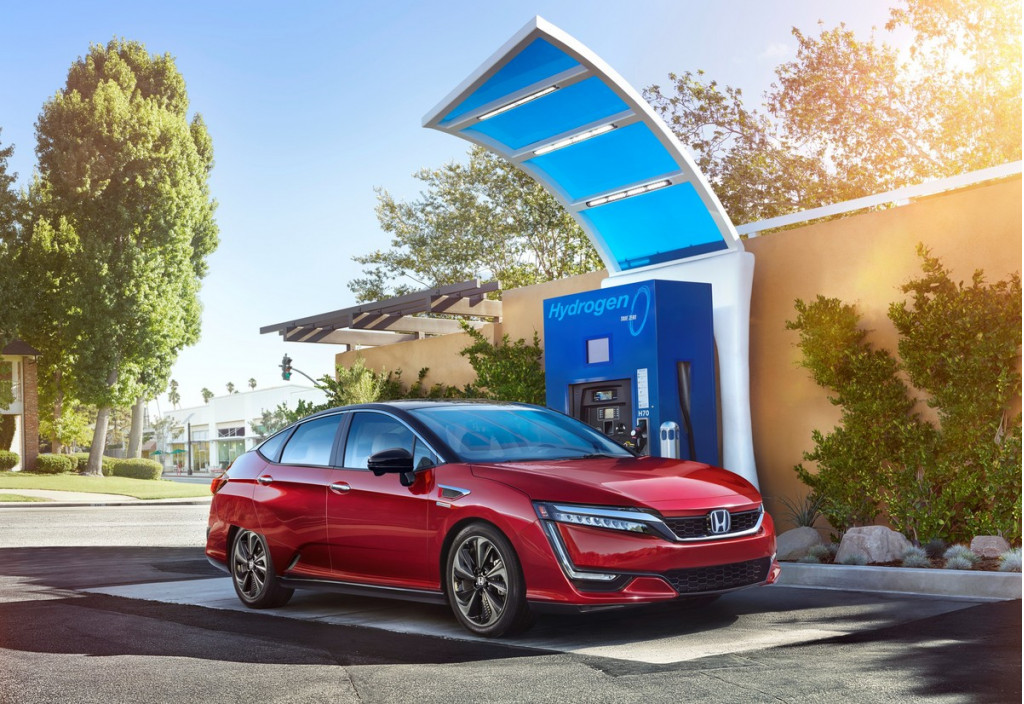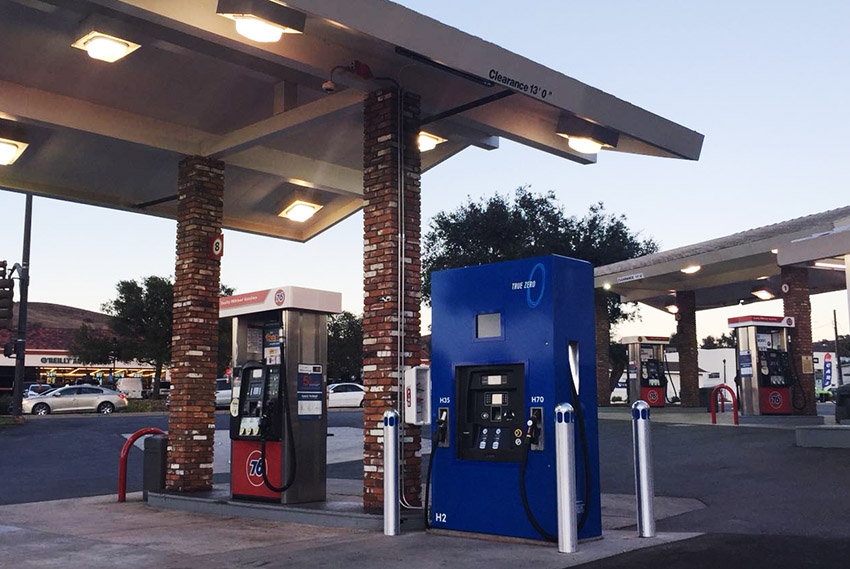The cold-weather startup performance of the 2020 Honda Clarity Fuel Cell has been improved.
If this feels like a low-priority item for a California car (with limited availability in Japan and Germany, too), let the irony fall like snowflakes: This piece of fuel-cell refinement was likely partly in preparation for a since-delayed network of publicly accessible Air Liquide fueling stations originally due by now in the Northeast. If so, at least the engineering arrived on time.
It’s been a rough year for fuel-cell vehicles, with many stations in the San Francisco Bay Area out of operation for months due to a June incident at a hydrogen facility and, most recently this week, the defeat of an extended EV tax credit that would have also renewed expired credits for hydrogen fuel-cell models. Factor in the faster-than-anticipated drop in battery prices, and you have an increasingly tough argument for fuel cells in passenger cars.
That said, the issue in recent years hasn’t ever been the cars themselves—especially when you look at the latest from Honda. The Honda Clarity Fuel Cell, much more so than the outgoing version of the Toyota Mirai, turned a page in hydrogen-vehicle development and shed the science-experiment look and feel.
Now with the Hyundai Nexo finishing off its first year of deliveries—boosting Hyundai past Toyota in global hydrogen-passenger vehicle sales—and a brand-new sport-sedan-like 2021 Toyota Mirai on the way next year, Honda is giving the 2020 Clarity Fuel Cell a little refresh and fortification heading into what’s already its fourth model year.

2020 Honda Clarity Fuel Cell
The 2020 model has an improved pedestrian-warning system for low-speed driving. Other new features are mostly cosmetic: It adds heated mirrors, a new Crimson Pearl color scheme (replacing Bordeaux Red), and a brown-hued interior now matched with the Platinum White exterior color.
Core specs for the Clarity Fuel Cell remain unchanged. An electric motor system rated at 174 hp and 221 lb-ft turns the front wheels. It’s fed by a 103-kw fuel-cell stack, while an air-cooled 1.7-kwh lithium-ion battery pack acts as the energy buffer when full-throttle bursts are needed and to store away excess energy generated by the fuel-cell system or recovered by regenerative braking. That yields a range rating of 360 miles, or MPGe efficiency ratings of 69 city, 67 highway.
Overall Green Car Reports has found the Clarity Fuel Cell to be a quiet, responsive, comfortable sedan that might be mistaken for a long-range electric car and feels like it could easily be sold bearing Honda’s Acura luxury badge. The infotainment system offers well-integrated CarPlay and Android Auto connectivity, and the full Honda Sensing suite is included.
What’s not included is a whole lot of road-trip freedom. The Clarity Fuel Cell is offered through just 12 approved dealerships—six in the LA region, five in the San Francisco Bay area, and one in Sacramento.

True Zero hydrogen fueling pump, run by First Element Fuels, opened in Thousand Oaks, CA, Mar 2018
The economics are favorable, with an allowance of hydrogen included. In California—the only state where it’s currently available—the Clarity Fuel Cell qualifies for single-occupant HOV lane access as well as a $5,000 state rebate.
A next-generation Toyota fuel-cell stack is due next year, in the Mirai; meanwhile Honda (with GM) is working on a next-generation fuel-cell stack that it hopes will sell in the ten-thousands, while this generation sells in the thousands. Honda underscores that there are 40 hydrogen fueling stations across California. Ever more the missing piece, just get some more stations installed, eh?













